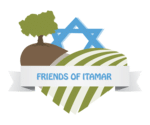Parashat Shemot – 2012
Parshat Shemot – January 13 2012 The last portions of the book of Bereishit focus on the life and times of Yosef HaTzaddik, of his influence, esteem and excellence in all realms
Parshat Vayigash – 2011
Parshat Vayigash December 30 2011 Leah Goldsmith The tehillim “Even maasu habonim hayita lerosh pina” – “The stone which the builders rejected has become the
Parshat Vayeshev – 2011
Parshat Vayeshev December 17 2011 Yosef is successful in all realms. He is talented, beautiful and distinguished (which is why his brothers are so jealous of him). Yosef is always
Parshat Lech Lecha – 2011
Parshat Lech Lecha November 4 2011 Leah Goldsmith Much of the book of Genesis is devoted to the stories of the lives of our Patriarchs and Matriarchs, what they did and also wher
Parashat Noach – 2011
Parshat Noach October 29 2011 In last week’s parsha, man made a vow to guard the garden and keep it. Ten generations later we witness the total moral crumbling of mankind. No
Parshat Devarim – 2011
Parshat Devarim August 5, 2011 Leah Goldsmith Living in the heart of biblical Israel gives me the special privilege of being an eyewitness to the mosaic of historical- religious
Parshat Bechukotay – 2011
Parshat Bechukotay May 20, 2011 Leah Goldsmith Most of the counting of the omer takes place in Iyar (May). This is also the month that Shlomo Hamelech began to build the Beit HaMik
Pesach – 2011
Pesach April 15, 2011 Our departure from Mitzrayim opened up the locked gates that withheld our personal and national freedom. This happened thousands of years ago, notwithstanding



